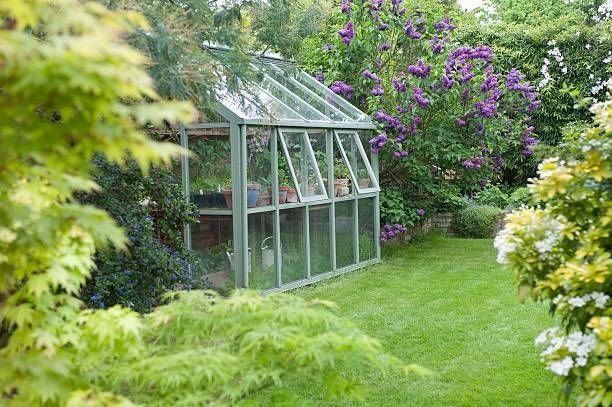Shedding Light on High Quality: Monarch Greenhouse Sheds Utah Exceptional Designs
Wiki Article
The Future of Greenhouses: Developments in Sustainable Farming
Are you curious about the future of greenhouses and just how they are transforming lasting farming? From sophisticated climate control systems to upright farming methods, water-efficient irrigation techniques, sustainable power combination, and smart data analytics, these improvements are transforming the method we grow our food.Advanced Environment Control Equipment
To achieve ideal expanding problems, you can depend on the improvements in greenhouses with sophisticated environment control systems. These systems have revolutionized the means we grow crops, giving a controlled setting that is helpful to plant development. With these ingenious systems, you can now manipulate temperature level, moisture, light degrees, and also CO2 concentrations to create the excellent problems for your plants to flourish.Among the essential attributes of these advanced environment control systems is their capacity to regulate temperature level. By utilizing sensing units and automated controls, the greenhouse can change the temperature based on the specific needs of the plants. This makes sure that they are never ever subjected to severe warmth or chilly, which can be destructive to their growth.
Humidity control is another crucial aspect of these systems. By maintaining the optimal humidity degrees, you can avoid problems such as mold, mildew, and condition from influencing your crops. These systems can additionally regulate the quantity of light that reaches the plants, ensuring that they receive the optimal quantity for photosynthesis.
Additionally, progressed climate control systems can even control CO2 focus. By boosting the levels of CO2 in the greenhouse, you can improve plant development and efficiency. This is particularly valuable in areas with low natural CO2 degrees.
Vertical Farming Methods
One essential vertical farming method is making use of piled expanding systems. Stacked growing systems are commonly used in metropolitan locations where area is limited.One popular method is called vertical hydroponics, where plants are expanded in nutrient-rich water without dirt. This method is extremely reliable as it decreases water usage by as much as 90% contrasted to typical farming techniques. Furthermore, given that the plants are expanded inside, they are shielded from pests and illness, minimizing the requirement for chemicals.
One more strategy is aeroponics, which includes suspending the plant roots in a mist or air environment. This method permits optimal nutrient absorption and oxygenation, resulting in faster growth and greater returns. Aeroponics also utilizes less water than typical farming and can be carried out in upright systems, making it a popular selection for vertical farming.
Water-efficient Irrigation Approaches
Taking full advantage of water conservation is important when it involves executing water-efficient irrigation methods in lasting farming. With international water deficiency coming to be a pressing problem, it is vital to develop cutting-edge techniques that enhance water use in greenhouse operations.One encouraging technique is drip irrigation, which supplies water directly to the plant origins, decreasing waste and evaporation. By utilizing a network of tubes with little emitters, water is used gradually and exactly, ensuring that plants receive the required moisture without excess drainage.
One more effective strategy is using dirt dampness sensing i loved this units. These tools gauge the dampness web content in the soil and supply real-time data to farmers. By checking the dirt's dampness degrees, farmers can accurately figure out when and just how much water to use, avoiding over-irrigation.
Additionally, the application of rain harvesting systems is obtaining appeal in greenhouse agriculture. Collecting rainwater from rooftops and saving it in storage tanks allows farmers to use this all-natural source for irrigation objectives, reducing dependence on traditional water resources.
Last but not least, the fostering of automated watering systems can significantly improve water effectiveness. These systems use sensing units to discover soil wetness degrees and climate condition, readjusting irrigation timetables accordingly. By maximizing water use based on actual plant requirements, these systems can minimize water waste and advertise sustainable farming practices.
Renewable Energy Assimilation
Sustainable energy assimilation in greenhouses offers a number of benefits, consisting of reduced running expenses and reduced reliance on non-renewable power sources. The generated power can after that be used to run various operations within the greenhouse, such as home heating, lights, and air flow systems. These generators harness wind power and transform it into electricity, which can be utilized to supplement the power needs of the greenhouse.Smart Information Analytics and Automation
To enhance the performance of your greenhouse operations and maximize resource usage, webpage take into consideration executing clever information analytics and automation. Smart information analytics includes accumulating and evaluating data from numerous sensors and gadgets within your greenhouse.
This can consist of automating the control of lights, air flow, irrigation systems, and nutrient shipment. By automating these processes, you can make sure that your plants obtain the ideal conditions and nutrients at the ideal time, without the need for constant hand-operated treatment.
Moreover, smart information analytics and automation can function with each other synergistically. The information gathered by sensors can be used to notify automated systems, allowing them to make real-time modifications based upon the present conditions. This assimilation of information analytics and automation can lead to more precise and effective resource allocation, eventually leading to higher returns and far better crop More Bonuses top quality.
Conclusion
Finally, the future of greenhouses in sustainable agriculture looks encouraging. With sophisticated climate control systems, vertical farming strategies, water-efficient watering techniques, and renewable resource assimilation, greenhouses are becoming much more efficient and eco-friendly. In addition, using smart information analytics and automation further improves efficiency and lowers waste. These developments are leading the way for a much more sustainable and reliable agricultural sector, making certain a greener and healthier future for all.
By maximizing water use based on actual plant requirements, these systems can decrease water waste and promote lasting farming techniques.

Report this wiki page